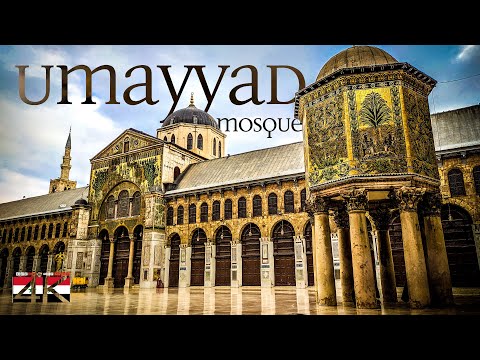
Nestled in the heart of Damascus, Syria, the Umayyad Mosque, also known as the Great Mosque of Damascus, stands as a monument not only of historical and architectural significance but also as a symbol of cultural confluence that has stood the test of time. Founded in the early 8th century by the Umayyad Caliph Al-Walid I, it is one of the oldest and largest mosques in the world and has been a foundational site for Islam since its completion in 715 AD.
#### **Historical Background**
Before it was transformed into an Islamic archetype, the site on which the Umayyad Mosque stands was home to various temples. Originally it was a temple dedicated to Hadad, the Aramean god around 3000 years ago. Later, under Roman rule when Christianity spread across Rome including Syria, it became a Christian basilica dedicated to John the Baptist in the 4th century. This religious layering provides insights into how Damascus itself has been a melting pot for various cultures and religions throughout history.
The transition from a church to a mosque occurred when Muslims entered Damascus in AD 634 during the reign of Caliph Omar ibn al-Khattab. However, it wasn’t until 706-715 AD under Caliph Al-Walid I that this site was fully transformed into what is now known as the Umayyad Mosque. This construction reflected not only religious but also political intentions; demonstrating Islamic power through impressive architecture.
#### **Architectural Significance**
Umayyad Mosque is renowned for its staggering size and architectural innovation. The basic layout comprises a vast rectangular prayer hall bordering an enormous courtyard. This structure includes three minarets which are among its most distinctive external features — The Minaret of Qaitbay, The Minaret of Isa (Jesus), and The Minaret of the Bride. Each bears unique historical and architectural importance reflecting different eras.
Inside, its opulence is visible through extensive mosaics depicting landscapes and buildings which cover much of its interior walls and facade. These mosaics are exceptional because they represent Muslim art that adapted Byzantine techniques to express Islamic religious themes without depicting human figures.
#### **Cultural Relevance**
Beyond architecture, throughout centuries, this mosque has played pivotal roles both as an Islamic educational center and as a place for significant political gatherings within Muslim history. It holds spiritual significance in housing relics believed to belong to John the Baptist (Prophet Yahya in Islam).
Moreover, Umayyad Mosque has been recognized as not only a cornerstone for followers of Islam but also signifies tolerance and overlapping between different faith communities historically existing peacefully together within Syrian society.
#### **Preservation Issues Amidst Conflict**
Ongoing conflicts since 2011 have put many historical monuments at risk including this majestic mosque. Although it has survived through many adversities over centuries from natural disasters to invasions; current warfare conditions pose new threats making preservation efforts critically challenging yet imperative.
#### **Conclusion**
The Great Mosque of Damascus remains one of humanity’s great cultural treasures—a masterwork representing centuries-old civilization crossroads between diverse religious communities thriving together architecturally and culturally under varied rulerships over millennia.
As Syria continues navigating through protracted conflict periods preserving such heritages becomes more than preserving bricks; it’s about safeguarding historical dialogues between different times and peoples synonymous with unity amidst diversity—a standpoint much needed today globally more than ever before.
